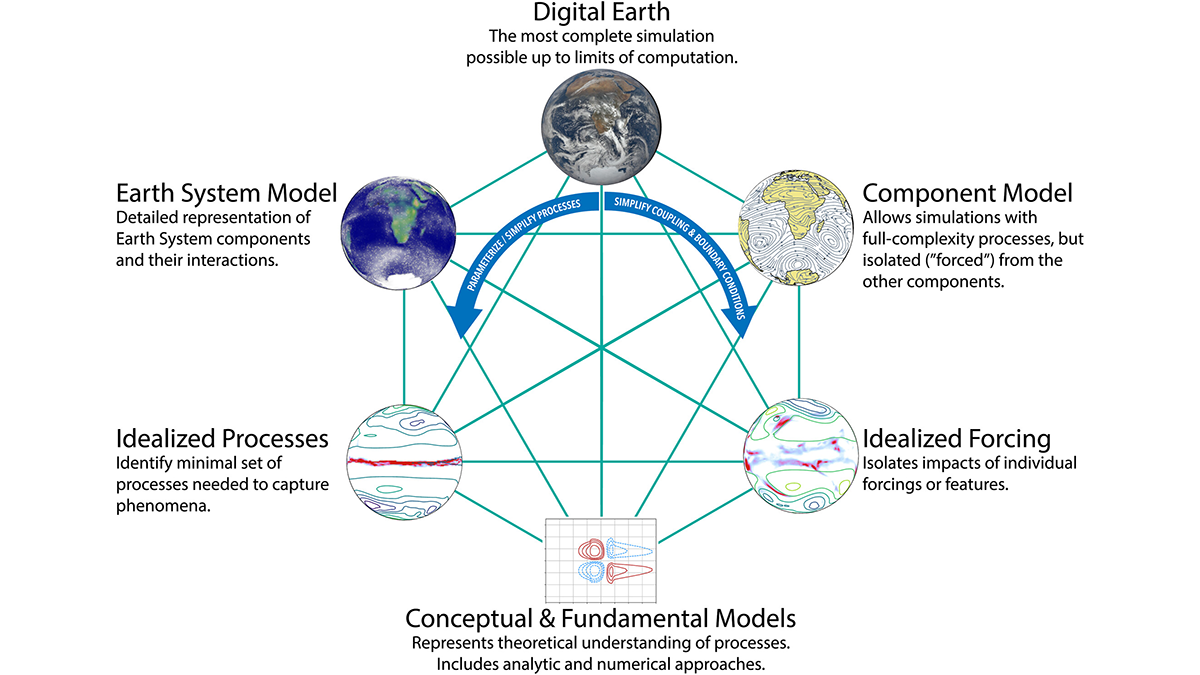Editors’ Highlights are summaries of recent papers by AGU’s journal editors.
Source: AGU Advances
“Everything should be made as simple as possible, but not simpler.” This popular saying paraphrases a sentiment expressed by Einstein about the need for simplicity, though not at the expense of accuracy. Modeling of the Earth’s climate system has become an incredibly complex endeavor, especially when coupling of physics of atmospheric movement with complex and nonlinear feedbacks with the ocean and land surface and forcing by collective human actions. Such complexity can make the underlying causes of model behaviors hard to diagnose and can make it prohibitively expensive to perform targeted experiments.
Two very recent developments, the emergence of kilometer-scale simulations and the rapid growth of machine learning (ML) approaches, have further increased the computational complexity of modeling global climate. In their commentary, Reed et al. [2025] remind us of the benefits of maintaining and applying a hierarchy of models with different levels of complexity. They make a special plea not to forget the power of using idealized, or simplified, climate models for hypothesis testing, model development, and teaching.
Citation: Reed, K. A., Medeiros, B., Jablonowski, C., Simpson, I. R., Voigt, A., & Wing, A. A. (2025). Why idealized models are more important than ever in Earth system science. AGU Advances, 6, e2025AV001716. https://doi.org/10.1029/2025AV001716
—Susan Trumbore, Editor, AGU Advances

